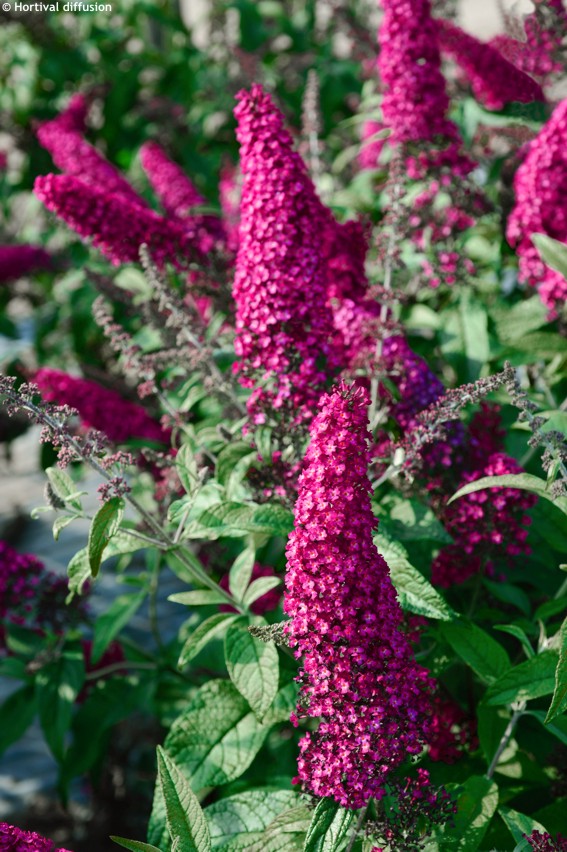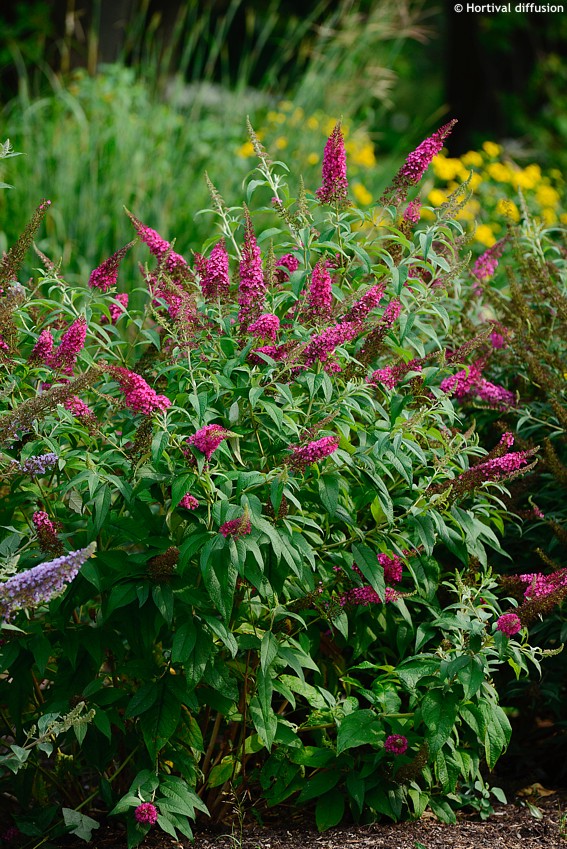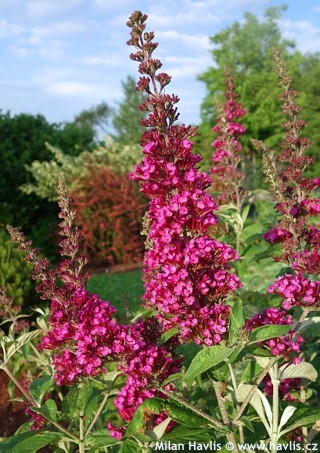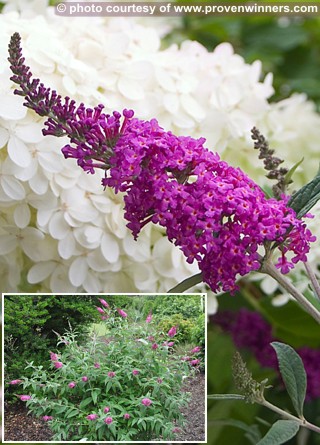Buddleja davidii 'Boscranz' REVE DE PAPILLON RED butterfly bush, buddleja
size/type
medium-sized shrub,medium-sized shrub
usual height
0,8-1,3m
usual width
0,8-1,3m
leaves
deciduous broadleaf
colour of leaves
flowers
showy
colour of flowers
blooming time
June-September
location
full sun
soil type
any (acidic to alkaline)
soil moisture requirements
evenly moist (dislikes drought)
USDA zone (lowest)
5 (down to -29°C)
winter protection
for zone 5+6

for zone 7

categorized
Buddleja
Reve de Papillon (Butterfly dream) is a French series of buddleja - butterfly bush. Though some varieties including this one were bred in the USA by a very active breeder of flowering plants Scott Trees at Ball Horticultural Co. Buddleja is better known as butterfly bush. The reason is obvious – from early summer when it starts blooming until early autumn it produces large, scented flowers that attract winged insects, mostly butterflies, bee hawk moths, and bumble bees.Description of the plant:
Reve de Papillon Red is a compact butterfly bush variety of a striking flower colour. The inflorescence is a terminal panicle, about 15 cm long, composed of small funnels with a less conspicuous orange throat. Flowering begins in late June and continues until September if the weather is sunny and warm. The plant makes a dense shrub about one meter tall and wide. Deciduous leaves are lanceolate, deep green, and slightly hairy. Patented as PP25730 in 2015. Butterfly bush requires little care apart from annual pruning - cut back all branches leaving only some 10 cm of previous year's growth in early spring. Though you can enhance its appearance by regular deadheading of old panicles - new flowers buds will form faster and the shrub will not show dry panicles with maturing seedpods. Plant it in full sun, in well-drained, humus-rich soil. It will die in boggy soil after winter. It does not demand feeding, yet with a good fertilizer it will be bushier, show deeper colours of both flowers and leaves, and be more floriferous. Though hardy to about -29°C (USDA zone 5) it performs better in warmer zones. For planting in colder areas we recommend buying older plants with woody framework.
Last update 21-07-2019
QUICK PRICE OVERVIEW
CURRENTLY SOLD OUT
WANT TO TRY A SIMILAR PLANT?



















